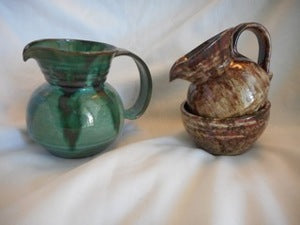HONEY TINS (PAILS)
In the early 1900’s, a tin pail was created to market honey. Prior to this, crocks were used. Although the use of crocks continued, they were eventually replaced by tins which were less costly and provided the ability to add colourful graphics with the producer and location.
The early tin pails were produced with a good sealing lid and a bail handle for carrying. These pails found their way into many other uses when empty. There are stories of the pails being used as lunch pails for school or sand pails for the beach. Some have had nail holes in the tops to hold bait for fishing or unfortunate insect collecting.
Later, honey tins came without the bail handle. Along with a wide range of colours in shades and combinations of blue, red, white, cream, green and gold, there are different designs such as bears, bees, bee skeps, and clover.
Some tins were marked with farm/ producer’s name, locations and provinces. Honey producers could also get tins that were generic in design which could be stamped with the producer’s information.
Currently, prices range from $10 to hundreds of dollars. While condition (rust, wear, dents, missing top/handle) plays a role, price is driven by age, inspection stamps, marking, colour, size (most range 2, 4, 8 lbs.) and location/ producer. Another aspect of price is that a pail’s value will vary by local interest. For example, a pail from Waterford would have more interest to a Waterford collector.
As with many containers, tin was eventually replaced by plastic and glass.
Honey Tin
HONEY TINS (PAILS)




